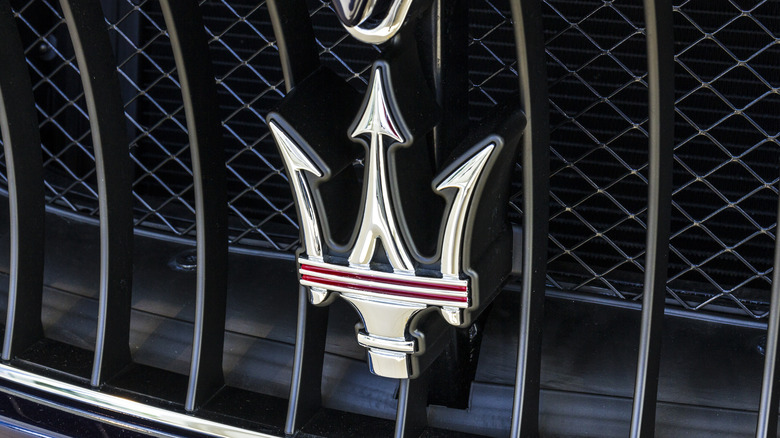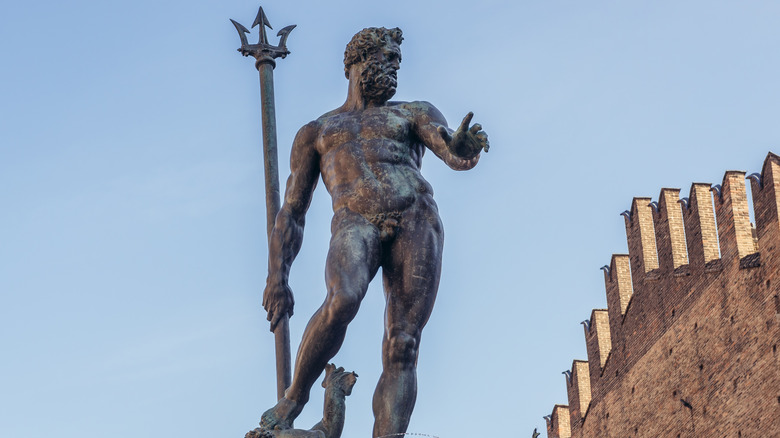The Real Life Inspiration Behind Maserati's Famous Logo
Anyone who knows anything about sports cars knows the Maserati name. Once the luxury division of Ferrari, it's currently owned by Stellantis, a multinational automobile manufacturer founded when the Italian-American conglomerate Fiat Chrysler Automobiles merged with the French PSA Group. But the Italian sports car's origin goes back to 1914 Bologna, Italy, where four of the seven Maserati brothers (Alfieri, Ettore, Ernesto, and Bindo) founded their legendary sports car company.
In the early 1900s, Carlo and Alfieri Maserati worked on improving the electrical systems of early automobiles. Hence, their reputation for innovation and precision engineering preceeded Alfieri, Ettore, and Ernesto when they opened the doors to their company, Officine Alfieri Maserati, in 1914. Interestingly, their first product wasn't a car but a significant starting component for engines. During World War I, Maserati built spark plugs for Italian aircraft engines.
The Maserati name has since become associated with sports cars, and its trident logo is known around the world. There's a fascinating story behind the logo that most car enthusiasts know little to nothing about, and no ... it has nothing to do with Aquaman. According to Maserati's website, sometime around 1920 the brothers were looking for a logo that would set them apart from other auto makers. They turned to their artist brother Mario, who wasn't part of the company, to design a symbol for their family's car brand.
The strength and vigor of Neptune's trident
Since the company got its start in Bologna, Italy, Mario was inspired by a statue erected in the city's Piazza Maggiore in the 16th century (via Mermaids of Earth). The Fountain of Neptune (aka "The Giant") is a looming statue of the Roman god of the sea. He holds a trident in his right hand, while his left extends outward to calm the waters. Below him are four cherubs, each representing the rivers Nile, Amazon, Danube, and the Ganges. The masterpiece was created by Flemish sculptor Jean de Boulogne (aka Giambologna) between 1563 and 1567.
The statue of bronze and stone comes with an intriguing and controversial legend. Commissioned by Pius IV to symbolize his power and reign, the Pope became worried by the size of the statue's genitals and ordered Giambologna to make them smaller. The sculptor begrudgingly complied, or so everyone thought. If you stand behind and to the statue's right, Neptune's thumb protrudes out past his leg in a peculiar way that makes the god's manliness appear bigger.
All that aside, Mario saw the Trident as a mythological symbol of strength and vigor. The red and blue colors that adorned the original logo derived from Bologna's city banner, and the rest, as they say ... is history.

